
Summer is here —Time to
SLIP-SLOP-SLAP-WRAP
SLIP on a shirt before you slide into the shade; SLOP on sunscreen; SLAP on a hat; and WRAP Sunglasses around your eyes.
Eye protection is important, not just to reduce glare and shade your view, but to prevent photokeratitis, or sunburn on your eyes from exposure to Ultraviolet rays from the sun. The American Optometric Association recommends wearing sunglasses that block UV rays and blue light.
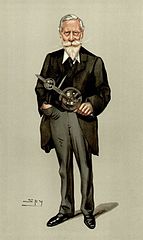
Sunglasses, as we know them today, developed during the 20th century. In 1913, while working on a lens to protect glass workers from cataracts, William Crookes, a chemist and physicist, developed a lens that could block 100 percent of ultraviolet rays and 90 percent of infrared rays by using lightly tinted glass containing cerium.
During the 1920s movie stars began wearing sunglasses on and off the set, to provide relief from harsh lights on the set and photographers’ flashbulbs. The association gave sunglasses a glamorous touch, but didn’t overcome the general view that people wearing any kind of glasses had something wrong with their eyes.
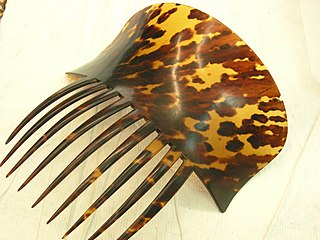
Sam Foster introduced mass market sunglasses in 1929, but sunglasses weren’t his original product. In 1919, Foster and his partner William Grant established a company to produce women’s hair accessories by using a technology for plastic molding. The same technology could be used for plastic glasses frames.
Foster’s partnership with Grant dissolved, but Foster didn’t have enough money to change the company name.
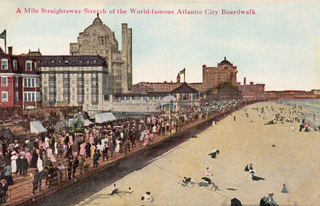
In 1929 Sam Foster began mass-producing sunglasses made of celluloid. He found a ready market for his Foster Grants in a Woolworth store on the boardwalk of Atlantic City N.J. It was the first time anyone could purchase glasses over-the-counter. Retail price for the new product was ten cents. Foster also sold sunglasses and hair accessories in other stores, promising store managers that if the glasses didn’t sell, he would take them back.
In 1938 Life Magazine pronounced sunglasses a “new fad for wear on city streets” and “a favorite affectation of thousands of women.” The previous year, 20 million pairs of sunglasses were sold, but only about 25 percent of Americans needed them to protect their eyes. Since the danger from UV rays was almost unknown, most sunglasses didn’t have UV protection.
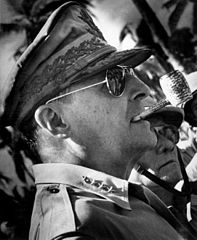
In 1937 the U. S. Army partnered with Bausch & Lomb to develop anti-glare sunglasses designed for pilots. The result was the Ray-Ban Aviator premiering in 1939. The styling became popular with the general public, especially after Ray-Bans became part of General MacArthur’s signature look, along with his corncob pipe.
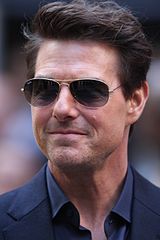
Ray Ban introduced the Wayfarer for the general public in 1952. It was and continues to be a popular style.
Polarized sunglasses first became available in 1936, when Edwin H. Land began making inexpensive lenses with his patented Polaroid filter to filter out glare and increase visibility.
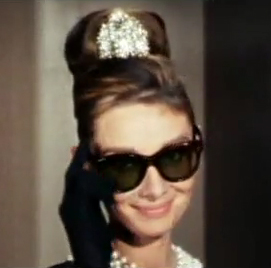
Sunglasses became increasingly popular as fashion accessories. In 1961 actress Audrey Hepburn wore sunglasses in Breakfast at Tiffany’s.
The very popular Who’s Behind Those Foster Grant’s? ad campaign launched in 1965. The campaign featured popular celebrities, among them Peter Sellers, Raquel Welch, Claudia Cardinale, and Robert Goulet. Sunglasses, especially Foster Grants, became a required fashion accessory. But they didn’t always have UV protection.
The primary reason to wear sunglasses is to protect our eyes from UVB and UVA rays. Naturally, style is also important. The best lenses completely cover the eye area, including the sides. Wraparound sunglasses are the best way to protect the entire eye area while still looking good. By the way, UV protection can either be a coating on the surface of the lens which will wear off over time, or have the film embedded within the lens itself. Embedded protection won’t wear off over time.
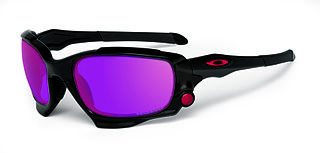
Sunglasses Fun
In 1965 Skeeter Davis released Sunglasses, written by John Loudemilk. In 1984 Tracy Ullman released a new version for her album You Caught Me Out. For a little ’80s nostalgia, check it out.
Illustrations
Sunglass emoji from Streamline Emoji Project by Vincenzo Le Moign.
Cariacture of William Crookes, 1902.
Tortoise Shell Hair Comb by Auckland Museum.
Boardwalk in Atlantic City postcard.
Tom Cruise in Ray Ban Sunglasses by Eva Rinaldi.
Audrey Hepburn from Breakfast at Tiffany’s.
Oakley Wraparound Sunglasses.
Kyle Osbrink. “9 Surprising Moments in the History of Sunglasses.” Science Museum. May 29, 2018.
Keeping Your Eyes Healthy. MedExpress. July 8, 2019.
“Choosing Eyeglass Lenses: Is UV Coating Important?” Vision by Design.

Sandra Wagner-Wright holds the doctoral degree in history and taught women’s and global history at the University of Hawai`i. Sandra travels for her research, most recently to Salem, Massachusetts, the setting of her new Salem Stories series. She also enjoys traveling for new experiences. Recent trips include Antarctica and a river cruise on the Rhine from Amsterdam to Basel.
Sandra particularly likes writing about strong women who make a difference. She lives in Hilo, Hawai`i with her family and writes a blog relating to history, travel, and the idiosyncrasies of life.

